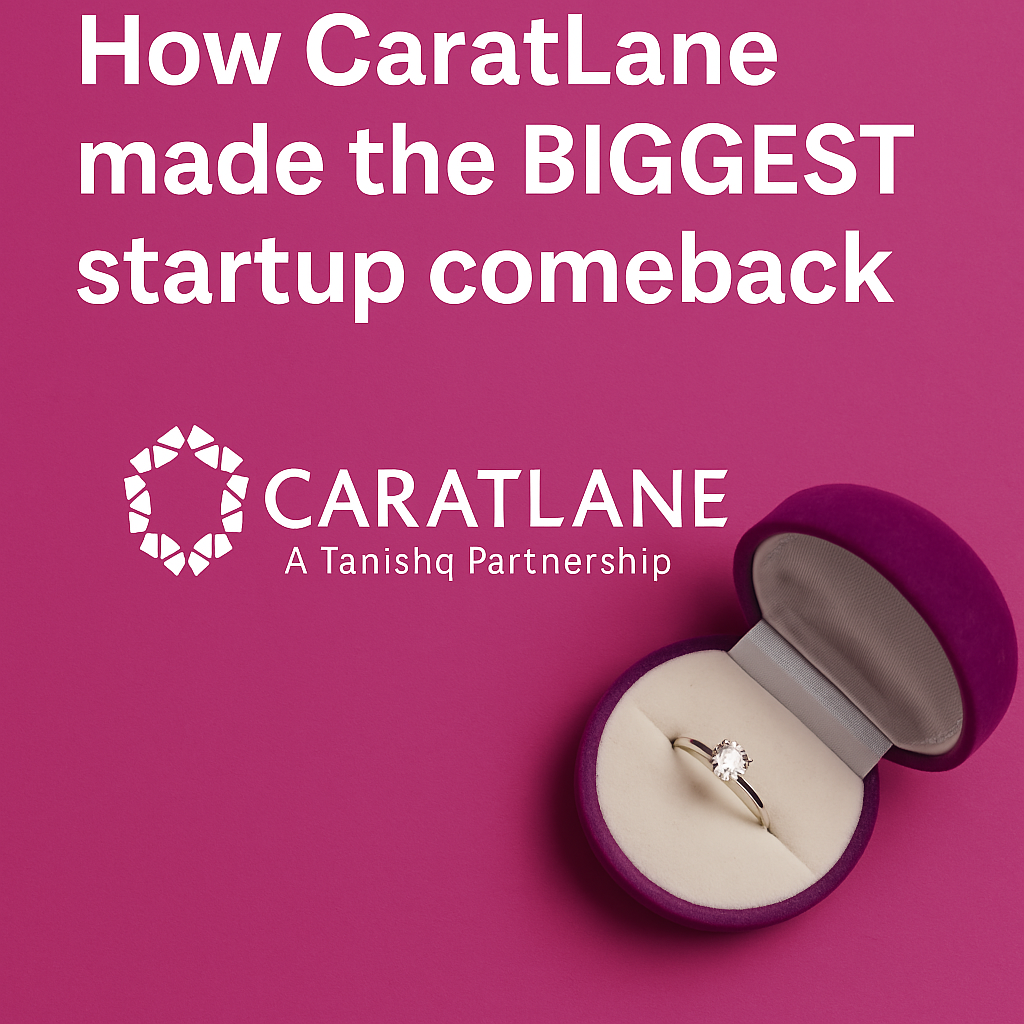Introduction
In 2015, CaratLane, an online jewelry retailer, was on the brink of collapse, bleeding crores of rupees every month. Many critics believed the company was finished. However, something changed in 2016, leading to one of the biggest comebacks in India’s startup ecosystem. This blog explores how CaratLane turned its fate around, with Tata’s acquisition playing a crucial role, along with four core strategies that disrupted the Indian jewelry market.
The Origins of CaratLane
CaratLane was the first Indian company to bring the e-commerce revolution to jewelry shopping. Its founder, Mithun Sacheti, came from a Marwari jeweler family and had extensive knowledge of the industry. Despite his family’s traditional jewelry business, he saw an opportunity in e-commerce. Inspired by companies like Amazon and Blue Nile in the U.S., he identified three major issues in India’s jewelry industry:
- Inventory Management – Traditional jewelry shops had excessive inventory compared to their annual sales, leading to inefficiencies.
- Gold Pricing Issues – The rising price of gold made it less attractive to sell online.
- Highly Unorganized Market – Around 90% of the jewelry market relied on small, local retailers.
With these insights, Sacheti launched CaratLane in 2008, securing an initial loan from his family and partnering with co-founder Srinivasa Gopalan. Their first hire, Avnish Anand, later became the CEO.
The Initial Struggles (2008-2016)
CaratLane initially operated both B2B and B2C models. They partnered with over 5,000 suppliers, offering customers over one lakh choices in solitaire diamonds. On the B2B front, they assisted brands like Tanishq in setting up e-commerce operations. However, despite investments from Tiger Global amounting to over ₹280 crores, CaratLane was still incurring massive losses. By 2016, the company faced a financial crisis, and Tiger Global was reluctant to invest further.
The Tata Acquisition and the Turnaround
Titan, a subsidiary of Tata, came to CaratLane’s rescue, acquiring Tiger Global’s stake. This marked the beginning of CaratLane’s resurgence. The company implemented four key strategies that led to its success:

1. Solving the Trust Problem
CaratLane expanded its offline presence, growing from just 12 stores in 2016 to over 220 stores across 75 cities. The partnership with Tanishq further boosted its credibility. Their branding as “CaratLane – A Tanishq Partner” helped them gain customer trust. Additionally, services like Try at Home, lifetime exchange guarantees, and certified diamonds made purchasing jewelry online more reliable.
2. Creating a Repeat Purchase Model
CaratLane shifted its focus from bridal jewelry to lifestyle jewelry, targeting younger consumers who would make repeated, smaller purchases for birthdays, anniversaries, and other occasions. This strategy increased their customer repeat rate to 25%, five times the industry average.
3. Mastering Pricing and Operational Efficiency
CaratLane priced its jewelry much lower than competitors. While Tanishq’s average selling price ranged from ₹1.2-1.5 lakh, CaratLane’s was around ₹25,000. Their strategy included:
- Focusing on diamond jewelry, which had higher margins.
- Eliminating wholesalers and moving production in-house.
- Adopting a “Just-in-Time” model, producing jewelry only after receiving an order, reducing inventory costs to zero.
4. Innovation in Technology and Marketing
CaratLane pioneered tech-driven innovations like virtual jewelry try-ons, smart showrooms with iPads, and even jewelry with embedded messages that could be scanned for a video message. They also positioned jewelry as a gifting option, making it an attractive choice for various celebrations beyond weddings.
Conclusion
CaratLane’s journey from near bankruptcy to becoming a major player in India’s jewelry industry is a testament to strategic innovation, market understanding, and operational excellence. While Tata’s investment provided financial stability, it was the company’s unique approach to trust-building, pricing, customer engagement, and technology that led to its extraordinary comeback. Today, CaratLane stands as an inspiration for startups looking to navigate challenges and emerge stronger.
Frequently Asked Questions (FAQ)
How did Tata’s acquisition help CaratLane?
Titan (a Tata subsidiary) bought out Tiger Global’s stake, providing financial stability and brand credibility. This helped CaratLane gain customer trust and expand its offline presence.
What was CaratLane’s key strategy for increasing repeat purchases?
CaratLane shifted its focus from bridal jewelry to lifestyle jewelry, targeting younger consumers who purchase jewelry for frequent occasions like birthdays and anniversaries.
How does CaratLane keep its prices lower than competitors?
CaratLane operates on a zero-inventory model, produces jewelry on demand, eliminates middlemen, and leverages long-term supplier relationships to reduce costs.
What role did technology play in CaratLane’s success?
CaratLane introduced virtual try-ons, interactive store experiences, and tech-driven marketing strategies to improve customer experience and differentiate itself from competitors.










